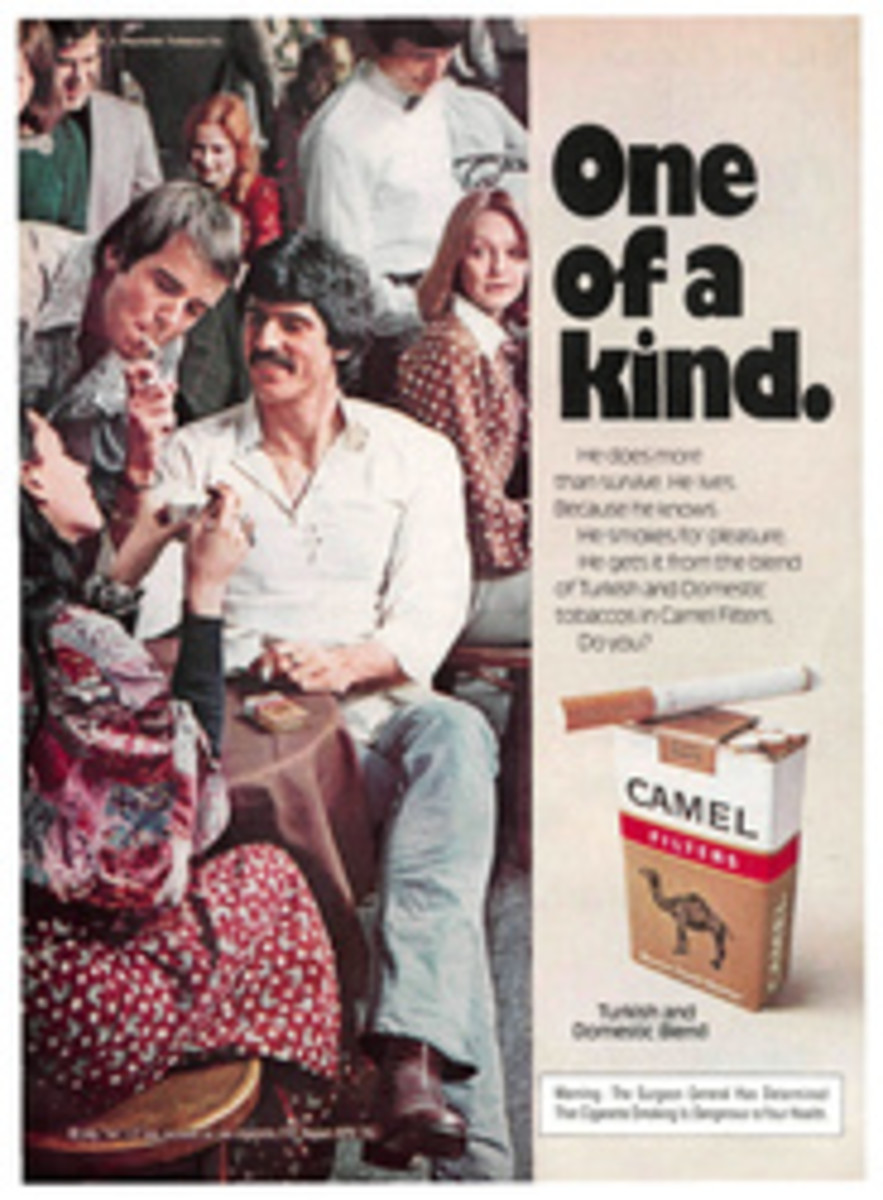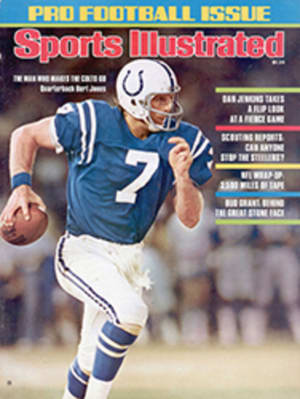
NFC Central
QUARTERBACKS
"Once you get to the playoffs, you might as well roll dice to pick the Super Bowl champion," says Minnesota's Fran Tarkenton (see Key Player). If so, what the son of a preacher man must do for a change is roll sevens rather than snake eyes in the playoffs; despite seven Black-and-Blue titles in the last eight years, the Vikings have gotten to the Super Bowl only three times and, of course, are the only NFL team with three Super Bowl defeats. Starting his 16th season, the 36-year-old Tarkenton seems remarkably healthy. He has never missed a game because of injuries, and he has overcome the muscular problems in his right arm by following a therapy program prescribed by that noted kinesiologist Mike Marshall. Tarkenton does not throw perfect spirals, but he never did. Spirals or knuckleballs, though, Tarkenton has accomplished everything in football but winning the Super Bowl.
Probably unaware of the rules, the Chicago Bears played without a quarterback—a genus-NFL quarterback, that is—for nine years, or ever since Billy Wade called plays back in 1966. Then late last season Coach Jack Pardee suddenly discovered rookie Bob Avellini from Maryland. Unlike recent Chicago quarterbacks, Avellini does not throw sidearm or left-handed, and he does not ignore open receivers so he can run the ball himself. Avellini directed the rookie-laden Bears to two victories in their last four games, and now they will join the rest of the NFL and play the game of 11-man football.
Detroit features three backups but no starter. Coach Rick Forzano will lean to Gospel singer Joe Reed as his regular, with a disgruntled Bill Munson and an unhealthy Greg Landry on call. While Reed has captivated Lion fans with his uninhibited play-calling, he tends to perform erratically. In Green Bay, the search for the new Bart Starr continues. The latest candidate: curly-haired Lynn Dickey (see Newcomer), who was brought in by Coach Starr himself after Dickey occupied the Houston bench for five seasons. Maybe Bart ought to make a comeback.
OFFENSES
"There are certain things a coach can't control, like bad weather and officials," says Bud Grant. "But he can control a 'funk.' " Grant's Vikings were a funkless 12-2 and averaged a funkless 27 points per game in 1975, both NFC bests. And despite the free-agent defections of Wide Receiver John Gilliam and Blocking Back-Safety Valve Receiver Ed Marinaro, Minnesota will not be very funky this season. Brent McClanahan replaces Marinaro as Chuck Foreman's bodyguard. Last year Foreman rushed for 1,070 yards (the first Viking to gain more than 1,000), caught an NFL-high 73 passes for 691 yards and scored 22 touchdowns to emerge as the league's best all-purpose back. Foreman earned a paltry $34,000 for all that, and will be paid only $85,000 this season. He wanted the Vikings to renegotiate that figure, but they refused. Second-round draft choice Sammie White and veteran Jim Lash combine to replace Gilliam. White averaged a touchdown for every three catches at Grambling last fall, occasionally carried the ball from the wingback slot and never missed a college game because of injury. In one preseason game. White outfoxed a Cincinnati defensive back to catch a 32-yard Tarkenton pass and give the Vikings a last-second victory. Ron Yary, a perennial All-Pro at tackle, and Guard Ed White, the NFL's arm-wrestling champion, who has reduced from a loggy 285 pounds to a svelte 260, anchor the line. And Dr. Fred Cox, the part-time chiropractor, resumes his placekicking rounds after operating flawlessly (9 for 9) inside the 40-yard line a year ago.
Maybe the ozone blinded the Chicago receivers, but the Bears' passing game last season was not good enough to beat the Bad News Bears. If Ron Shanklin isn't 100% healthy after last year's knee surgery, Avellini will have only Bo Rather (38 receptions) as a deep target and must concentrate on Tarkenton-style hunt-and-peck flips to Tight Ends Greg Latta and Bob Parsons and his running backs. Walter Payton is not Gale Sayers yet, but with Johnny Musso now available to keep defenses honest through the middle, Payton should get more running room outside. Musso joins the Bears four years after they drafted him from Alabama; he starred three seasons for British Columbia in the Canadian League and one for Birmingham in the WFL.
With Steve Owens forced into retirement because of his bad knees and Altie Taylor traded to Houston, top draft choice Lawrence Gaines, a 6'3", 230-pound Csonka-style inside bruiser, moves into the Detroit backfield alongside shifty Dexter Bussey (696 yards). The three backup quarterbacks throw to such experienced receivers as J.D. Hill (acquired from Buffalo in exchange for a No. 1 draft pick), Larry Walton, Ray Jarvis and Tight End Charlie Sanders, but the Lion line doesn't open very big holes or provide much passing time for quarterbacks.
Green Bay's attack should be called the Gnat Pack. Willard Harrell, 5'8", works alongside disgruntled John Brockington in the backfield. Three times a 1,000-yard rusher, Brockington slumped to 434 yards in 1975 and has asked to be traded. Dickey throws to 5'8" Steve Odom, 5'10" Eddie Bell (acquired from the Jets) and 6'1" Ken Payne (58 catches in 1975, the most by an NFC wide receiver), along with Tight End Rich Mc-George. Guard Gale Gillingham has unretired after a year's idleness, which could be a big help—but not big enough.
MIDDLE LINEBACKERS
Jeff Siemon hardly fits "the image of the nail-eating gorilla, because he's not going to take any cheap shots or clothesline guys," says Bud Grant. "He's just quietly efficient." The 26-year-old Siemon quietly and efficiently led the Vikings in tackles last year, intercepted three passes and was named to the Pro Bowl for the second time in three seasons.
Green Bay's once-brilliant Jim Carter suffers now from injury and controversy. Heralded as another Ray Nitschke, Carter ripped up a knee in 1974, broke a leg in 1975 and broke an arm this year. He is out indefinitely. Compounding Carter's difficulties, he also has a lawsuit pending against him in Green Bay for indecent exposure. Tom Perko, a fourth-round draft choice from Pittsburgh, is his replacement.
Chicago's Don Rives does not have the legend of Nitschke to compete against—only Dick Butkus. Rives missed 12 of the Bears' 14 games last year with a dislocated foot. Rather than trouble the inexperienced Rives with calling the defenses, Pardee—an old middle linebacker himself—has given the task to veteran Left Linebacker Doug Buffone. To continue the comparisons, Detroit's Jim Laslavic has not shown any Joe Schmidt-type brilliance in his three NFL seasons.
DEFENSES
The popular theory is that Minnesota's defenders are, well, ancient. True, End Jim Marshall is 38, End Carl Eller is 34 and Tackle Alan Page is 31. And the line does average 33. Sure, Linebacker Roy Winston is 36, while Linebacker Wally Hilgenberg and Safety Paul Krause are both 34. Big deal! These chaps act young—and play even younger. "Age isn't the concern," Grant says. "It's performance that counts." And Minnesota had the NFL's second-best defense in 1975. Grant is quietly stockpiling big, mean draft choices—like 6'6", 242-pound End Mark Mullaney and 6'3", 263-pound rookie Tackle James White—for the day when Page finishes law school and hangs out his shingle and the other old men up front decide to quit. If the Vikings have a weakness, it is a lack of depth in the secondary. Cornerback Bobby Bryant broke his arm and Grant has not found an adequate replacement.
The joke around Chicago is that some of the Bears are young enough to be sons of some of the ancient Vikings. Pardee practically wrote off the 1975 schedule when he decided to start 10 kids plus 10-year Linebacker Doug Buffone, and, sure enough, the Bears yielded an embarrassing 27 points per game. No more! Tackle Wally Chambers and End Mike Hartenstine power a tough front four that had an impressive 35 sacks in 1975. And Waymond Bryant has found a home at outside linebacker after failing in the middle. All the Bears need is some height in the secondary; in fact, their tallest starter there is only 5'11½", so rivals tend to pick on the Lilliputians.
Green Bay has secondary troubles, too, with the departure of Ken Ellis to Houston in the Dickey deal and Al Mathews to Seattle in the expansion draft. However, Fred Carr still plays an All-Pro style of left linebacker.
The most impressive defensive rookie in the exhibition games was Detroit Cornerback James Hunter, a No. 1 draft from Grambling. He could join the revived Lem Barney and Dick Jauron to give the Lions a superior set of deep backs. Mean Ed O'Neil provides stability for the otherwise shaky linebacker corps, and with Tackle Herb Orvis in Forzano's doghouse because of his verbal tirades, the Lion line will need all the backing it can get.
INSIDE DOPE
Like a lot of Packers, John Brockington seems put off by Bart Starr's police-state atmosphere in Green Bay. He wants out. Now! And Brockington hardly endeared himself to his linemen when he recently suggested that the reason for his poor 1975 performance (434 yards) was their inept blocking. Discord also seems to reign in Detroit. Altie Taylor's "trade me" request was granted, and Munson and Orvis both have expressed a desire for new homes, too.
BOTTOM LINE
"We're not trying to improve over 1975," says Minnesota's Grant. "We're just trying to be as good." The Vikings probably will not match last season's 12-2, but even a 9-5 will win the division—and maybe Tarkenton will roll sevens in the playoffs. Detroit's seven-year hold on second place may be over, too, because the young Bears, who won five of their six exhibition games, are probably the most improved team in the NFL.
ILLUSTRATION
TWO PHOTOS
KEY PLAYER
Last season the records fell like saplings in a hurricane, but Francis Asbury Tarkenton pays little notice to records. Up to now he has attempted more passes (5,225), completed more (2,931) and thrown for more touchdowns (291) than any quarterback in history. Who cares? Tarkenton insists he plays the game only because it's fun, and, of course, because the game pays him about $300,000 a year. "I'm still learning," he says. "I never find myself unchallenged." Tarkenton has not been blessed with exceptional receivers in Minnesota so he has made a living by throwing to his backs. "I take what the defense gives me," he says. "I never had the arm to throw long anyway." With respect for his age and health, Tarkenton seldom scrambles these days (only 16 times last season compared to his career average of 42), but he still scurries around long enough for his secondary receivers to get free. He will be at the Super Bowl in Pasadena on Jan. 9. As a player. Or as a commentator for NBC. Or maybe both.
NEWCOMER
"If the Packers are looking for miracles, they've chosen the wrong person," says I Lynn Dickey. "No one player can turn this or any other team around." He stops and smiles. "Not even me." Dickey served as Dan Pastorini's backup for four of his five years in Houston, but after throwing only four passes all last season he asked to be traded. "I could have stayed with the Oilers and held for extra points and field goals," he says, "but 10 years from now I would've kicked myself." Green Bay's quarterback coach, Zeke Bratkowski, touts Dickey as "a pure drop-back passer with perfect physical [6'4", 210 pounds] qualifications." Bart Starr, using his favorite word, describes Dickey as "coachable." Hmmm. Wasn't it just about 20 years ago that Vince Lombardi decided that Bart Starr was "coachable"?

